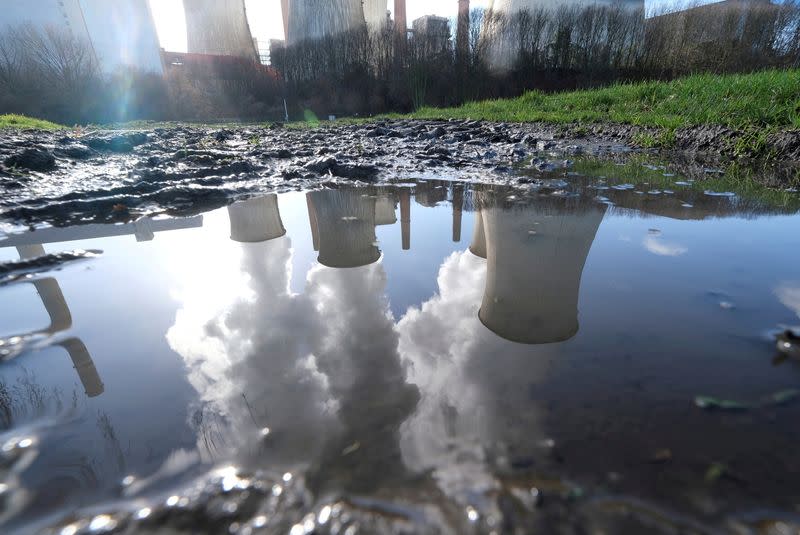Factbox-Global emission trading systems putting a price on pollution

By Susanna Twidale
LONDON (Reuters) - The price of carbon emissions permits in Europe's carbon market, the world's most established, hit a record high over 100 euros ($107) per tonne on Tuesday.
Europe’s Emissions Trading System (ETS) is the bloc’s flagship scheme to help curb greenhouse gas emissions.
Several other regions across the globe are also using ETSs to meet climate targets.
An ETS sets a gradually decreasing cap on the emissions a sector, or group of sectors, can produce. It creates "carbon permits" for those emissions, which companies must buy for each tonne of CO2 they emit. Some sectors are given free permits to help maintain international competitiveness.
Below are some of the major carbon emissions trading systems around the world.
BRITAIN
Britain launched a domestic ETS in 2021 after leaving the European Union scheme following Brexit. It covers power plants, aviation and energy intensive industries. Benchmark permits trading in the scheme currently trade around 85 pounds ($102.83) a tonne.
CHINA
China launched a national ETS in 2021 covering the power sector, which accounts for around 40% of the country’s total emissions. It is expected to expand to other carbon-intensive sectors, including steel and construction, in the next phase. Permits in the scheme currently trade around 57 yuan ($8.29).
EUROPEAN UNION
The EU's ETS, which started 18 years ago, is mandatory for all 27 EU members, plus Iceland, Liechtenstein and Norway, covering power plants, aviation and energy intensive industries. It covers around 40% of the bloc’s emissions. Permits hit a record high over 100 euros ($106.66) per tonne on Tuesday.
NEW ZEALAND
Its ETS, which began in 2008, covers electricity generators, manufacturers of liquid fossil fuels including petrol and diesel. Some forest owners are given free permits, others can voluntarily join the scheme. Prices currently trade around NZ$ 70 ($43.64).
U.S. RGGI
The United States' Regional Greenhouse Gas Initiative (RGGI) covers several states including Connecticut, Delaware, Maine, Maryland, Massachusetts, New Hampshire, New Jersey, Rhode Island, and Vermont. Pennsylvania and Virginia have also joined RGGI although Virginia's Republican governor has said he wants to withdraw the state from the carbon trading programme. RGGI covers emissions from the power sector. Permits in the scheme are currently trading around $13.
SOUTH KOREA
Its ETS started in 2015. It covers around 70% of the country’s economy including the power sector, industry and domestic aviation. Permits in the scheme are currently trading around 13,000 Korean Won ($9.99).
WCI
The Western Climate Initiative (WCI) covers California, Washington, Quebec and Nova Scotia in Canada and includes electricity generators and large industrials. Permits are currently trading around $27.
Source: Price data Refinitiv
($1 = 0.8266 pounds)
($1 = 6.8765 Chinese yuan renminbi)
($1 = 0.9376 euros)
($1 = 1.6041 New Zealand dollars)
($1 = 1,301.1100 won)
(Reporting By Susanna Twidale, additional reporting by Valerie Volcovici; Editing by Emelia Sithole-Matarise)

 Yahoo Finance
Yahoo Finance 